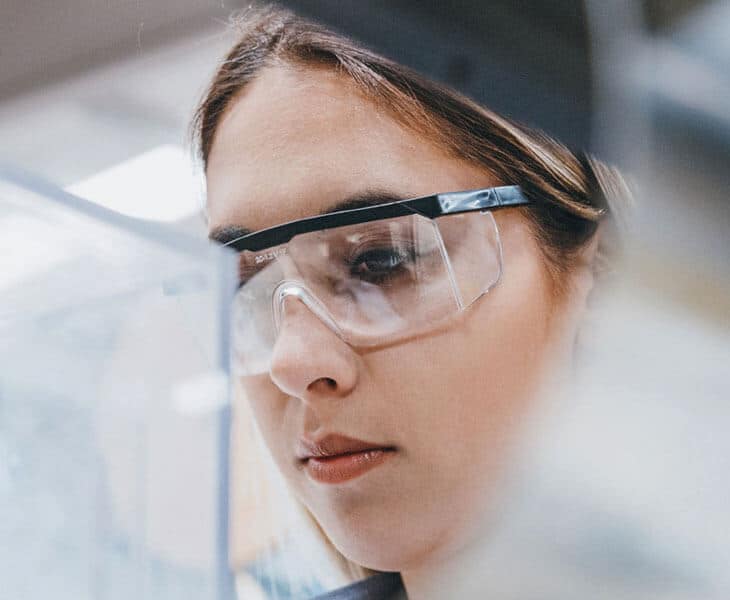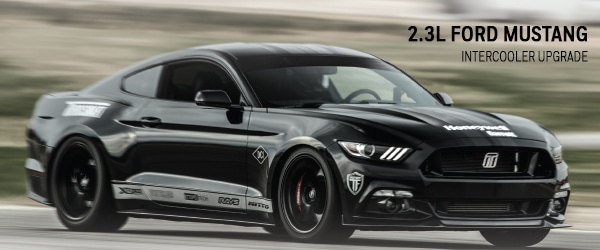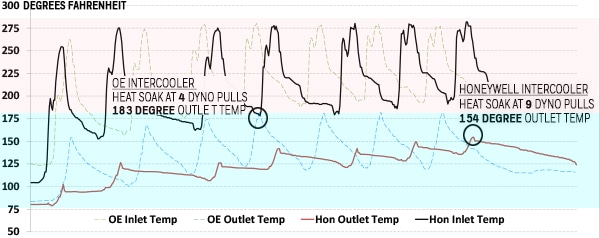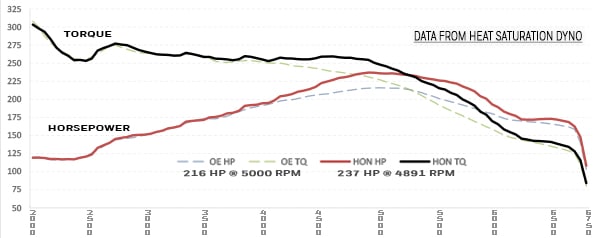Garrett Intercooler upgrade for the 2.3L Ford Mustang
Garrett has released a new drop-in intercooler upgrade for the 2015 and newer Mustang 2.3L EcoBoost engine platform. The 857564-6001 intercooler is C.A.R.B. certified and CFD engineered to reduce air recirculation, decrease charge air temperatures, and support more horsepower output than the factory unit.
Granted by the California Air Resource Board (C.A.R.B), executive order #D-794 allows the 857564-6001 Garrett intercooler upgrade to be used on specific emission controlled vehicles. California is the only state that is permitted to issue emissions standards with an approval form the Environmental Protection Agency. Obtaining a C.A.R.B certification identifies this intercooler will not increase vehicle emissions.
Computational Fluid Dynamics (CFD) is a process that uses numerical calculations to simulate movement of gasses through defined boundaries and various conditions. Supercomputers take days to perform each analysis and have become a standard process used when developing Garrett thermal products.
Cast aluminum end tanks designed with CFD analysis software reduce air recirculation and provide consistent air flow through the core resulting in a 30% reduction in pressure drop. These end tanks are TIG welded to the core for superior strength and aesthetics.
To maximize the available space and cooling potential, the Garrett intercooler core is 60% larger than stock and features advanced offset fin design and vacuum brazed bar-and-plate construction resulting in superior fatigue performance and up to a 40 degree reduction in charge air temperature.
A stock 2016 2.3L EcoBoost Mustang was used to perform consecutive dyno pull comparisons to simulate on-track conditions with the Garrett intercooler and the OE intercooler. In the chart above, each peak represents one dyno pull. The top peaks show inlet air temperatures which remain consistent around 275 degrees while the bottom peaks reflect outlet air temperatures going into the engine.
Heat soak/saturation identifies the limit at which an intercooler can no longer reduce charge air temperatures going into the engine. Looking at the chart we can see that both intercoolers reach heat saturation at significantly different times and significantly different temperatures.
Based on this test, the OE intercooler reached a max outlet temperature of 183 degrees during its fourth pull; whereas the Honeywell intercooler took 9 dyno pulls to heat saturate and reached a maximum outlet temperature of 154 degrees.
The graph above depicts horsepower and torque at full heat saturation. With the OE intercooler installed, the 2.3L engine produced 216HP at 5000 RPM. Garrett’s C.A.R.B. approved intercooler upgrade produced 237HP at 4891 RPM.
This intercooler upgrade installs in two and a half hours using basic hand tools and reuses the factory hoses, clamps, and bolts. Elongated inlet and outlet ports create a more secure surface for hose attachment reducing the chance of detachment on higher horsepower applications while maintaining compatibility with OEM hoses and charge pipes.
Increasing the efficiency of the air cooling system enables the engine to produce higher peak values during the hottest conditions by delivering cooler air to the engine and prolonging the negative effects of heat saturation.










